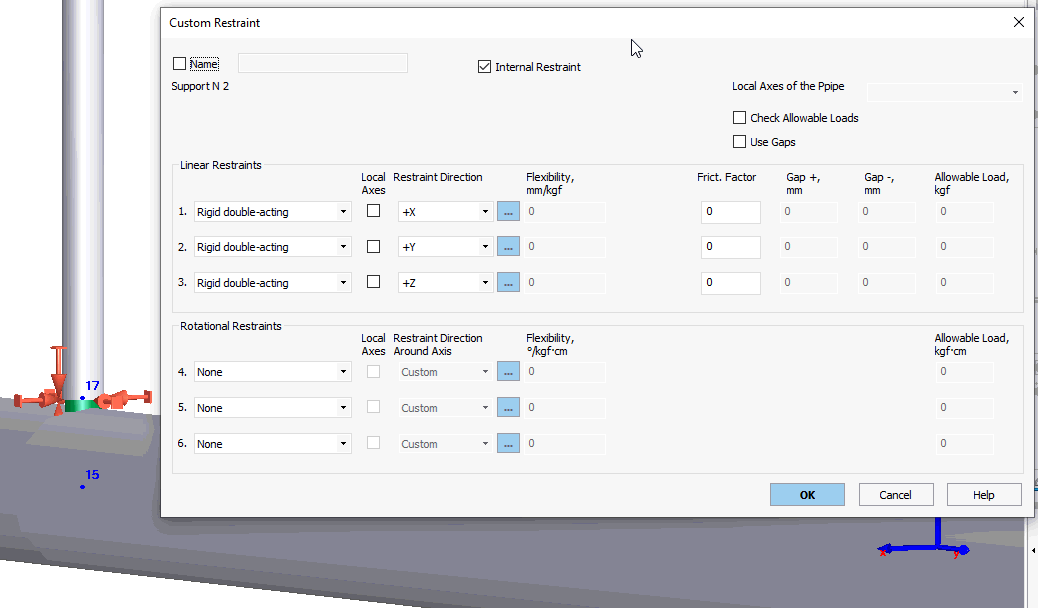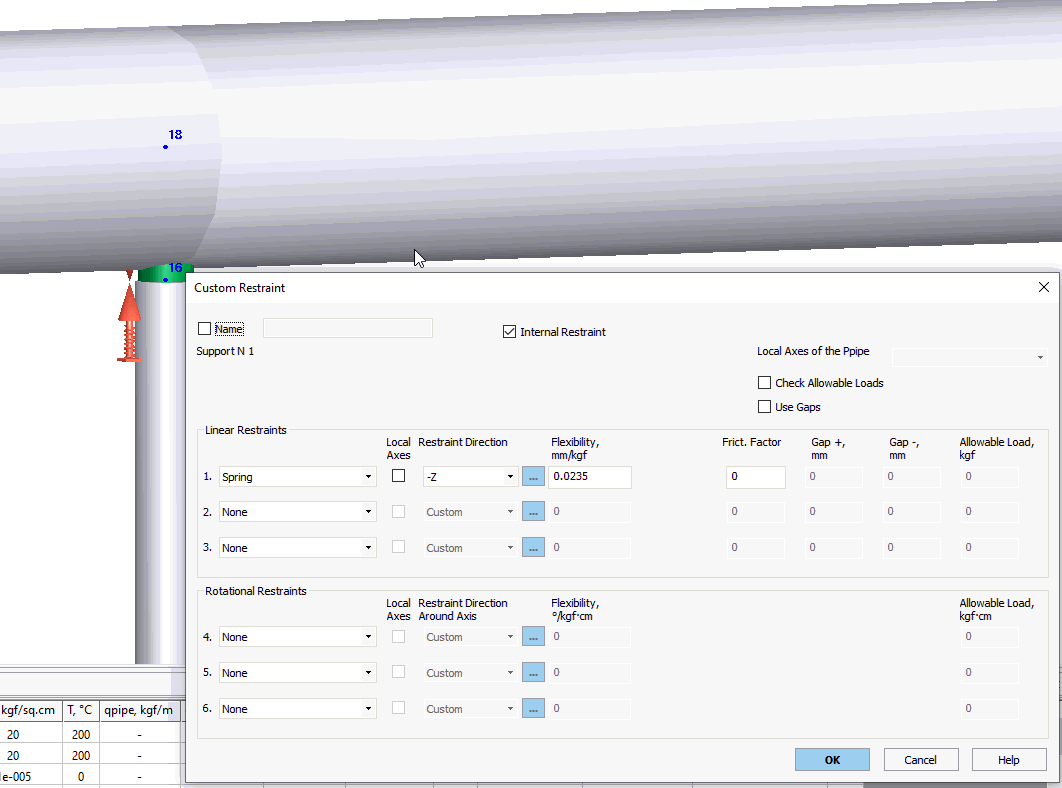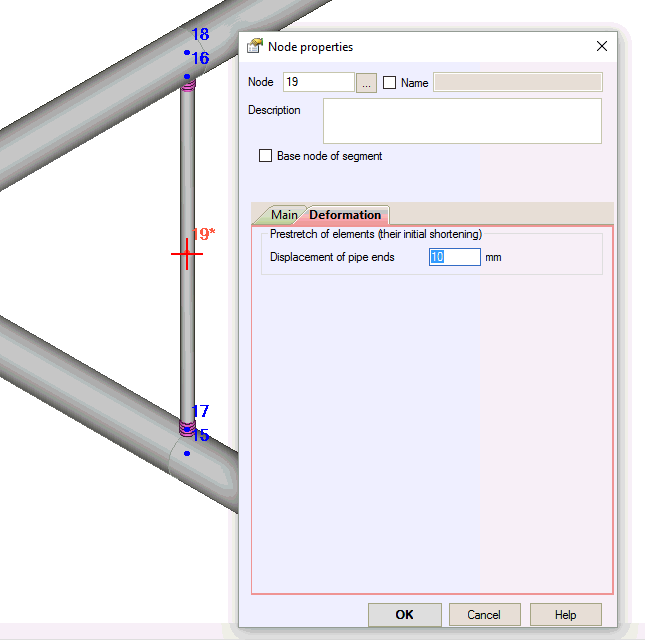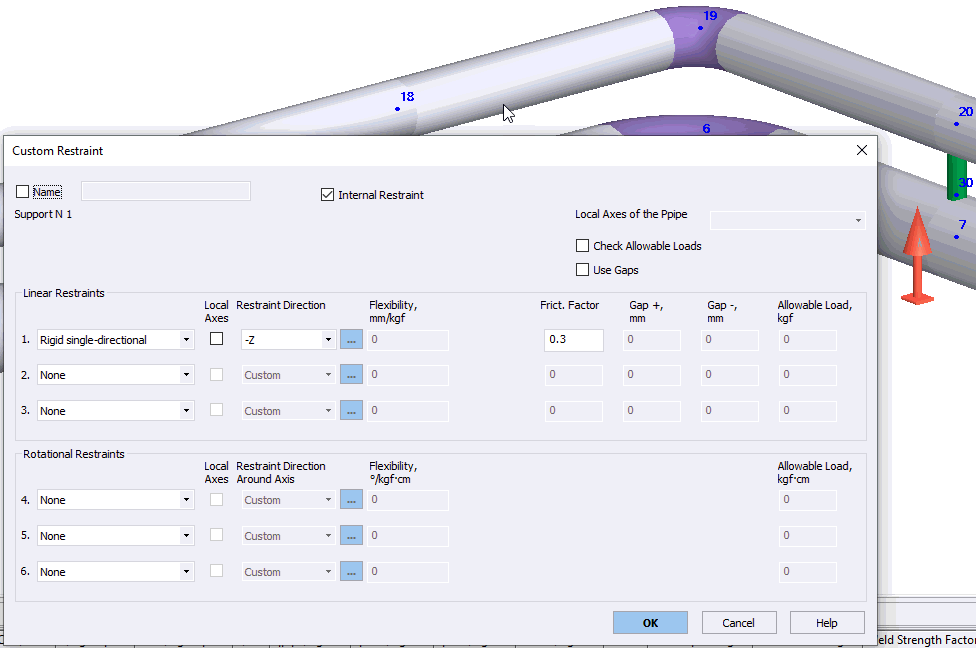

Learn more about START-PROF pipe stress analysis software
Various pipe-to-pipe connections can be modeled using internal restraints.
Example project file: PipeToPipeConnectionHanger.ctp
This example demonstrates modeling a variable spring hanger connected to piping segment 15-18. The spring is located at the upper attachment point, with a hinged connection at the lower pipe attachment.

Model the tie rod as a pipe element with these properties:
Diameter equal to tie rod diameter
Wall thickness equal to half the tie rod diameter
Zero internal pressure
Minimal test pressure (1e-5 kgf/cm²)
Operating temperature equal to ambient temperature
Zero insulation and fluid weight

For the hinged connection at the tie rod bottom, add an internal restraint at node 17, located D/2 from pipe 10-9 axis. Configure rigid linear restraints with no angular restraints.

At the upper attachment point, add an internal restraint with an additional vertical elastic restraint to model spring flexibility.

Adjust spring preload by applying cold spring displacement anywhere along the tie rod length.

Example project file: PipeToPipeConnection.ctp
To model a pipe supported on another pipe with resting supports, add structural jumpers between the pipes at support locations.

Model each support using rigid elements. Place an internal restraint on each rigid element connection.
